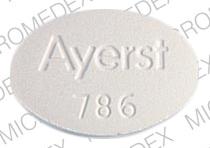Thiosulfil Forte Disease Interactions
There is 1 disease interaction with Thiosulfil Forte (sulfamethizole).
Sulfonamides (applies to Thiosulfil Forte) hematologic toxicity
Major Potential Hazard, Moderate plausibility. Applicable conditions: G-6-PD Deficiency
The use of sulfonamides has been associated with hematologic toxicity, including methemoglobinemia, sulfhemoglobinemia, leukopenia, granulocytopenia, eosinophilia, hemolytic anemia, aplastic anemia, purpura, clotting disorder, thrombocytopenia, hypofibrinogenemia, and hypoprothrombinemia. Acute dose-related hemolytic anemia may occur during the first week of therapy due to sensitization, while chronic hemolytic anemia may occur with prolonged use. Patients with glucose-6-phosphate dehydrogenase (G-6-PD) deficiency should be observed closely for signs of hemolytic anemia. Therapy with sulfonamides should be administered cautiously in patients with preexisting blood dyscrasias or bone marrow suppression. Complete blood counts should be obtained regularly, especially during prolonged therapy (>2 weeks), and patients should be instructed to immediately report any signs or symptoms suggestive of blood dyscrasia such as fever, sore throat, local infection, bleeding, pallor, dizziness, or jaundice.
Switch to professional interaction data
Thiosulfil Forte drug interactions
There are 154 drug interactions with Thiosulfil Forte (sulfamethizole).
Drug Interaction Classification
| Highly clinically significant. Avoid combinations; the risk of the interaction outweighs the benefit. | |
| Moderately clinically significant. Usually avoid combinations; use it only under special circumstances. | |
| Minimally clinically significant. Minimize risk; assess risk and consider an alternative drug, take steps to circumvent the interaction risk and/or institute a monitoring plan. | |
| No interaction information available. |
See also:
Further information
Always consult your healthcare provider to ensure the information displayed on this page applies to your personal circumstances.


